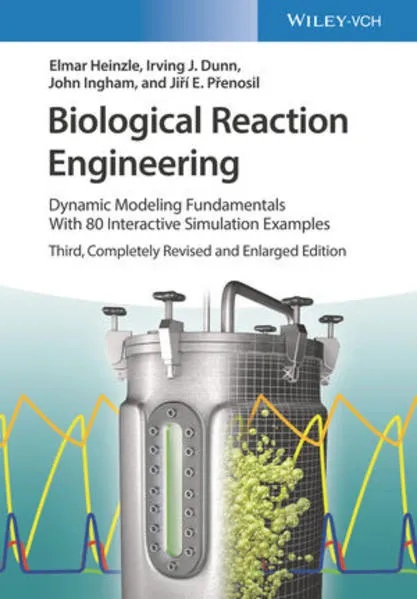
- Publikationen ca: 3
- Buchbewertungen ca: 1
- Fragen & Antworten
Elmar Heinzle
Irving J. Dunn is retired from the ETH-Zurich, where he taught and did research in the area of biochemical engineering for over thirty years, within the Chemical Engineering Dept. His degrees are from the University of Washington and Princeton University. Dr. Dunn has published widely in his field, ranging from bioreactor design, process control, animal cell culture, and specialized wastewater treatment. His teaching and research has featured the use of modeling and simulation and has resulted in the publication of three textbooks: Biological Reaction Engineering, Dynamics of Environmental Bioprocesses and Chemical Engineering Dynamics. In 1981 he founded the renowned International Modeling and Simulation Courses in Braunwald, Switzerland.
John Ingham is now retired from Chemical Engineering at Bradford University U.K. The first of a long series of courses on the Modeling and Simulation of Dynamical Chemical Engineering Systems was begun there in 1974, sponsored by the Institution of Chemical Engineers and inspired by leave of absence at the ETH Zurich. Research areas include Liquid-Liquid Column Hydrodynamics, Extraction Process Dynamics and Biochemical Engineering; the latter, being developed, during a further leave of absence at the GBF, Braunschweig. He is especially proud of this and the two other VCH-Wiley Modeling and Simulation books.
Jirí E. Prenosil was born 1939 in Prague, Czechoslovakia. Educated in Prague with PhD in Chemical Engineering, he worked in the Czechoslovak Academy of Science and various universities abroad. 1971 he moved to Switzerland with appointment at the Swiss Federal Institute of Technology (ETH) in Zürich. 1984 he was a Visiting Professor at the University of London, Canada. His life interest is in Biochemical Engineering, design and modeling of bioreactors with immobilized biocatalysts. It has resulted in over 100 publications and co-authorship of two other books in this area. He is a co-founder of the renowned International Modeling and Simulation Courses in Braunwald, Switzerland since 1981. 1997 he was granted the Swiss Technology Transfer Award. In 2006, he retired from the ETH.
Biological Reaction Engineering
This book explains modeling and simulation of the dynamics of biological processes in a readily comprehensible manner, using the unique combination of simplified fundamental theory and direct hands-on computer simulation. Biological systems modeled range from single enzymes to metabolic and multi-organism systems.
Biological Reaction Engineering
Die Dynamik biotechnologischer Produktionsprozesse ist äußerst komplex. Ziel des Buches ist es, diese Vorgänge durch systematische Modellbildung und Computersimulation verständlich und durchschaubar zu machen. Es werden ohne viel mathematisches Rüstzeug Grundprinzipien erklärt und anhand von zahlreichen praxisrelevanten Beispielen alle wichtigen Aspekte der Bioverfahrenstechnik ausführlich beschrieben.
Biological Reaction Engineering
This book explains modeling and simulation of the dynamics of biological processes in a readily comprehensible manner, using the unique combination of simplified fundamental theory and direct hands-on computer simulation. Biological systems modeled range from single enzymes to metabolic and multi-organism systems.


